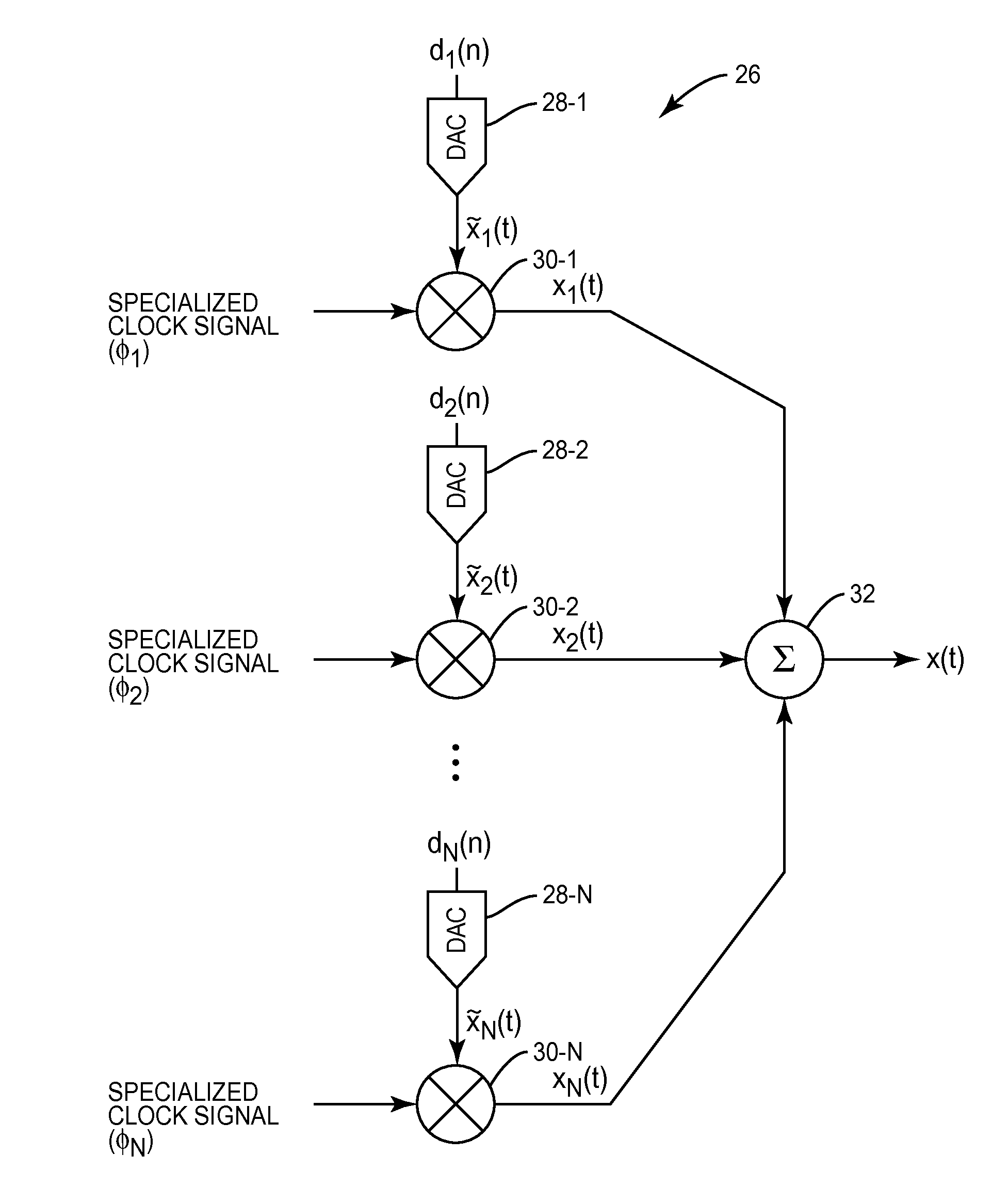Digital analog converter
a digital analog converter and converter technology, applied in the field of digital analog converters, can solve the problems of large physical size and complex design of low-pass filter b>12/b>, high-order hold does not significantly relax and the low-pass filter requirements of all of the above approaches do not integrate well onto the integrated chip
- Summary
- Abstract
- Description
- Claims
- Application Information
AI Technical Summary
Benefits of technology
Problems solved by technology
Method used
Image
Examples
Embodiment Construction
[0031]The embodiments set forth below represent the necessary information to enable those skilled in the art to practice the embodiments and illustrate the best mode of practicing the embodiments. Upon reading the following description in light of the accompanying drawing figures, those skilled in the art will understand the concepts of the disclosure and will recognize applications of these concepts not particularly addressed herein. It should be understood that these concepts and applications fall within the scope of the disclosure and the accompanying claims.
[0032]The present disclosure relates to a digital-to-analog conversion system that utilizes a specialized clock signal to reshape an analog impulse response of a digital-to-analog converter (DAC). Preferably, a shape of the specialized clock signal is such that Nyquist images resulting from digital-to-analog conversion are controlled in a desired manner. In this regard, FIG. 6 illustrates a digital-to-analog conversion system...
PUM
 Login to View More
Login to View More Abstract
Description
Claims
Application Information
 Login to View More
Login to View More - R&D
- Intellectual Property
- Life Sciences
- Materials
- Tech Scout
- Unparalleled Data Quality
- Higher Quality Content
- 60% Fewer Hallucinations
Browse by: Latest US Patents, China's latest patents, Technical Efficacy Thesaurus, Application Domain, Technology Topic, Popular Technical Reports.
© 2025 PatSnap. All rights reserved.Legal|Privacy policy|Modern Slavery Act Transparency Statement|Sitemap|About US| Contact US: help@patsnap.com



